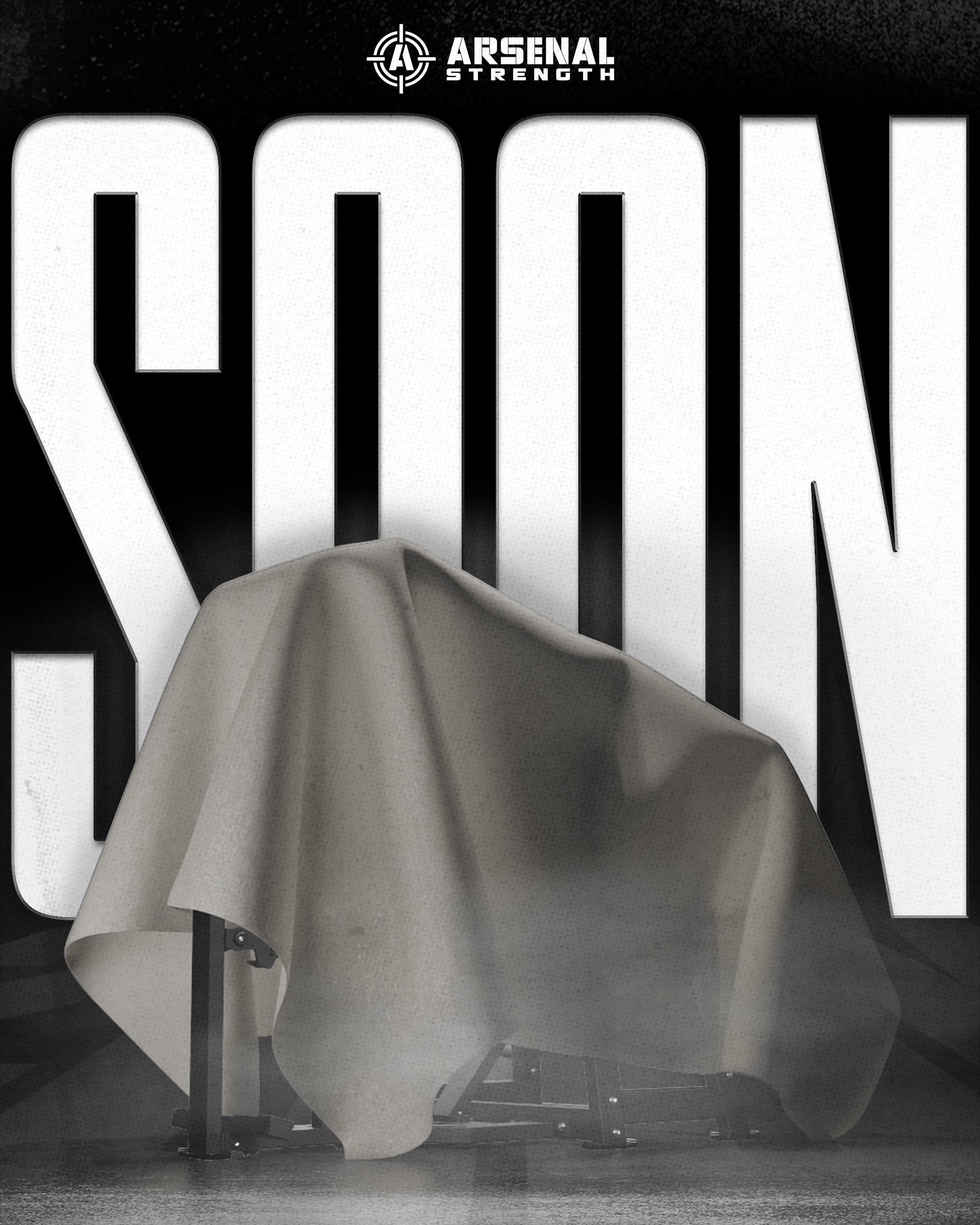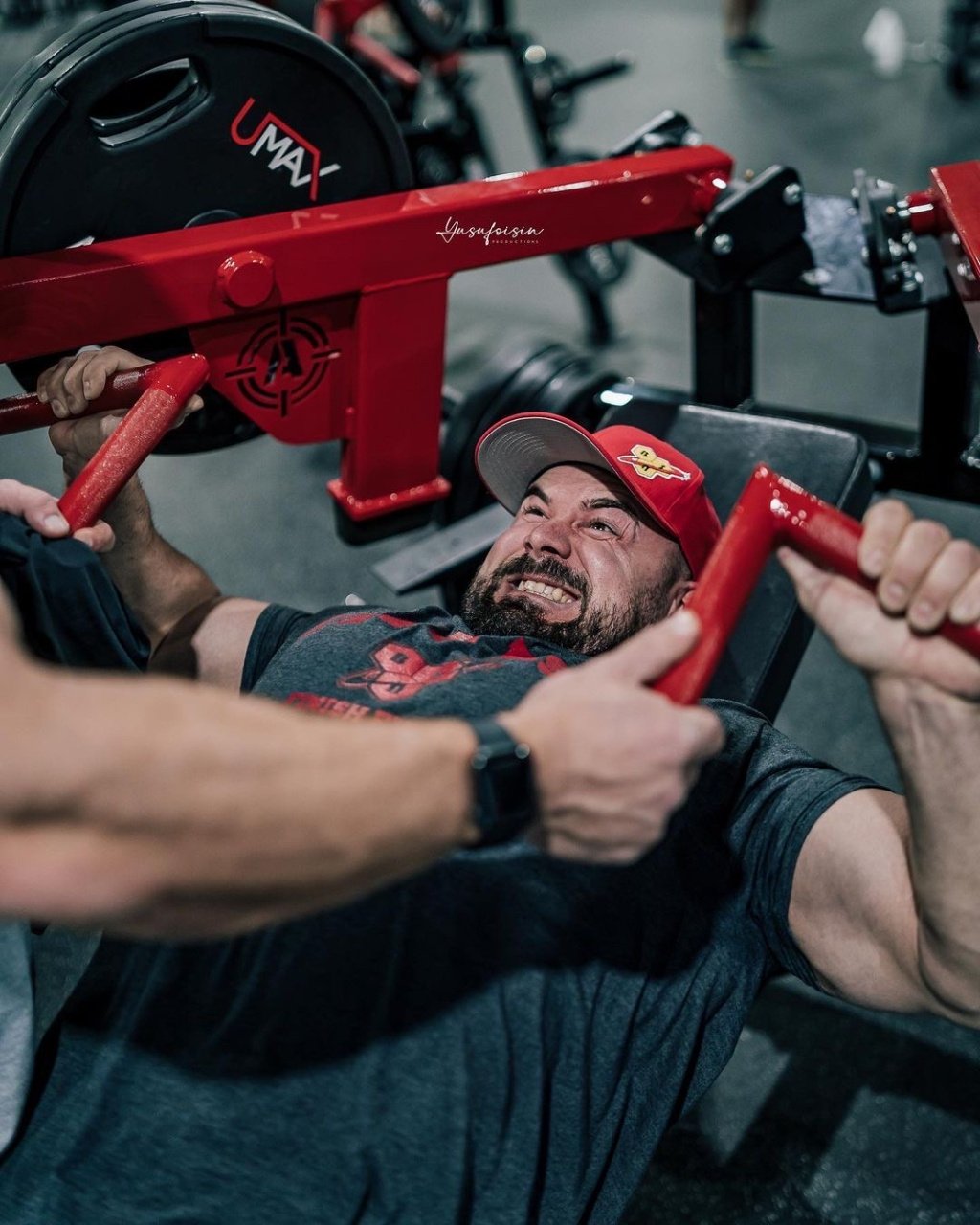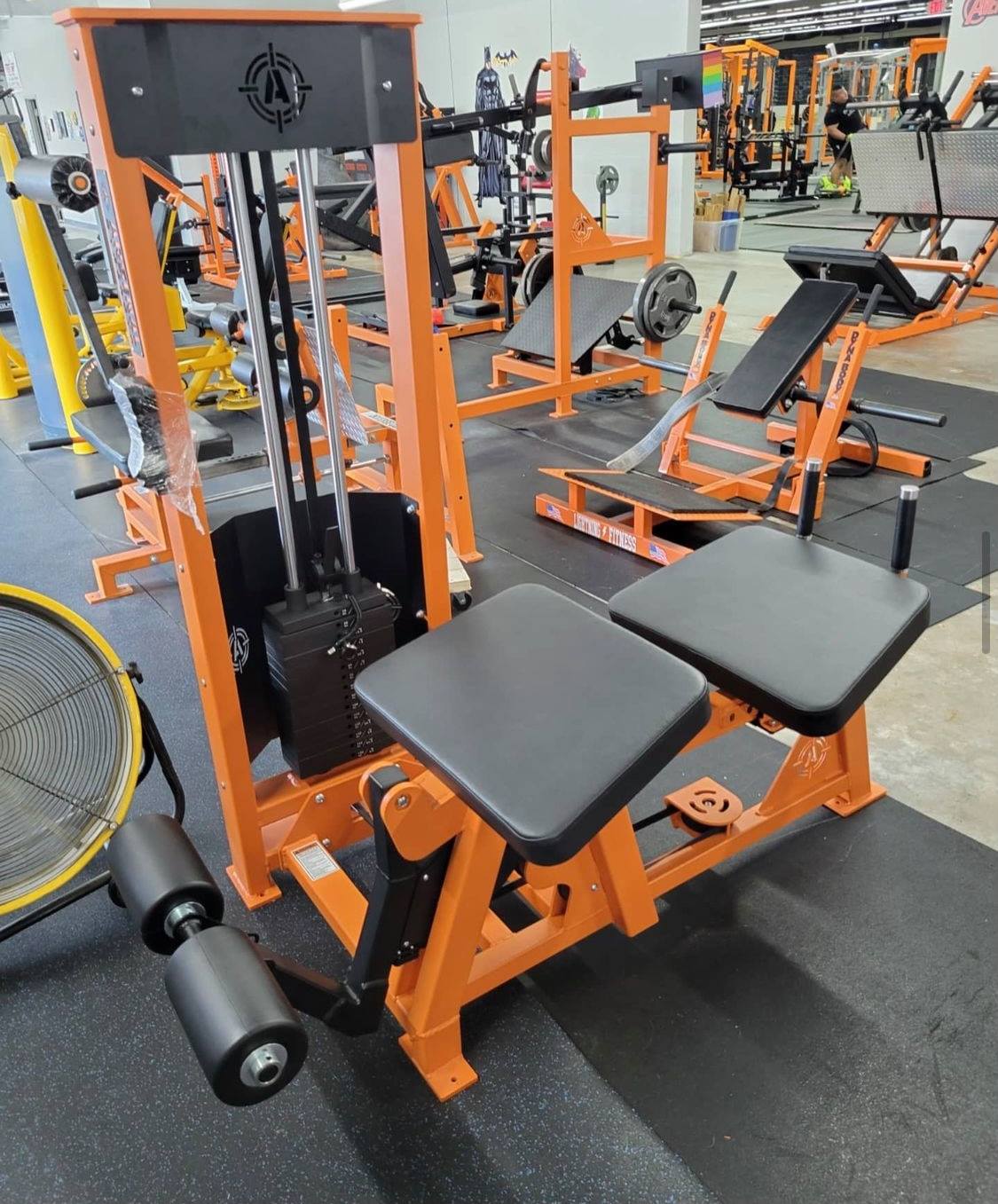Step-by-Step Guide on How to Do Calf Raises on Leg Press
Ready to target those calves with precision? In this guide, we’ll get straight to the point on how to do calf raises on leg press. You’ll discover the exact foot setup, motion path, and posture needed to maximize your calf development—without the complexity. Dive in to elevate your leg training and see tangible results, one press at a time.
- Master proper technique by setting your starting position with the balls of your feet on the footplate, executing the calf raises with a full range of motion, and maintaining correct posture throughout the exercise for maximum muscle activation.
- Reap the benefits of enhanced ankle strength and mobility, explosive power for dynamic activities, and development of well-defined, strong lower leg muscles enriching both aesthetics and performance.
- Avoid common pitfalls of calf raise exercises such as insufficient range of motion, incorrect foot placement, and overloading with heavy weights to prevent injury and ensure the most effective muscle growth and training.
Proper Technique for Calf Raises on Leg Press
So, you’re ready to conquer calf raises on a leg press machine? Fantastic! Before we dive in, it’s important to understand the proper technique. After all, proper form is the cornerstone of effective training and injury prevention.
We’ll focus on three key aspects: your starting position, the execution of the exercise, and maintaining correct posture. These elements are crucial for maximum muscle activation and growth. Shall we delve into each one?
Starting Position
The journey to mastering calf raises on a leg press begins with the correct starting position. This is where you set the stage for a successful, effective workout, including exercises like the calf press. How can this be achieved?
Firstly, foot placement is absolutely crucial. You need to position the balls of your feet on the lower portion of the footplate, with your toes pointed straight ahead. Your heels should be hanging off the edge to facilitate a full range of motion throughout the exercise. Your feet should be positioned hip-width apart, allowing for a strong and stable base, promoting effective targeting of the calf muscles.
Execution of the Exercise
With the starting position sorted, we can move on to the execution of the exercise. This is where the magic really happens!
To execute calf raises on the leg press for maximum muscle activation, follow these steps:
- Push back as far as you can while keeping your feet against the platform.
- Your forefoot should be pressed against the sled plate with your heels off the plates, extending your ankles as high as possible and flexing your toes.
- The lifting and lowering of your heels should be performed at a slow to moderate rate of speed to ensure you’re engaging the calf muscles thoroughly with each repetition.
Maintaining Posture
Proper posture is equally important, especially when using safety bars during workouts. This is crucial for overall stability, reducing stress on the Achilles tendon, and developing those awesome defined calf muscles.
Maintaining proper posture during calf raises involves:
- Sitting down at the machine with your back straight, shoulders back and down, and core engaged
- Resting your feet so just your toes are at the bottom of the platform
- Pushing back as far as you can while keeping your back straight and your core engaged
- Avoiding rounding your shoulders or hunching forward
Benefits of Incorporating Calf Raises on Leg Press
Now that we’ve covered the technique, it’s time to discuss the benefits. What do calf raises on a leg press machine bring to the table? You’ll be delighted to know that this exercise offers a host of benefits, including improved ankle strength and mobility, enhanced explosive power, and well-developed lower leg muscles.
We explore each of these benefits in detail, understanding the benefits will give you more motivation to incorporate this exercise into your workout routine.
Improved Ankle Strength and Mobility
Our first benefit is improved ankle strength and mobility. Ankle strength is crucial for overall stability and balance, and mobility is key for reducing stress on the Achilles tendon.
By performing calf raises on the leg press machine, you’re actively engaging the muscles in the calves and ankles, which helps to strengthen and stabilize the ankle joint. This is fantastic for improving overall ankle strength and mobility. Not to mention, enhanced ankle strength and mobility reduce injury risk by allowing the ankle to move and function properly, reducing the load on the knee and hip.
Enhanced Explosive Power
Next up, enhanced explosive power. If you’re into sports or activities that require dynamic movements, calf raises on a leg press machine are a must!
Performing calf raises on a leg press can enhance explosive power by strengthening the calf muscles and ankles, which can improve force output and help with movements that require explosive power. The calf raises on a leg press primarily target the gastrocnemius and soleus muscles, which aid in increasing explosive power.
Well-Developed Lower Leg Muscles
Finally, calf raises on a leg press machine are fantastic for developing well-defined lower leg muscles. Strong, well-defined calf muscles not only look great but also boost your performance in various physical activities.
Performing calf raises on leg press strengthens the muscles involved in plantarflexion and dorsiflexion, improves flexibility, endurance, and aids in injury prevention. Moreover, the growth of calf muscles can be affected by variations in foot positioning during calf raises on leg press. Performing calf raises with knees straight targets the gastrocnemius, while different foot positions can induce portion-specific hypertrophy in the medial and lateral heads of the gastrocnemius muscle.
Alternative Calf Raise Exercises
Don’t have a leg press machine or just looking to diversify your workouts? No worries! A variety of alternative exercises offer similar benefits. Let’s examine some effective alternatives.
Alternative calf raise exercises include bodyweight calf raise, seated dumbbell calf raise, and single-leg calf raise. Each alternative has its unique benefits and challenges, offering you a wide range of options to keep your workouts exciting and effective.
Bodyweight Calf Raise
First up, the bodyweight calf raise. This exercise doesn’t require any fancy gym equipment, just your body weight!
The correct posture for performing bodyweight calf raises involves:
- Standing with your feet shoulder-width apart
- Toes pointing forward
- Back straight
- Shoulders back and down
- Abs pulled in
Raise your heels slowly, keeping your knees extended but not locked. Aim for three sets of 15-20 repetitions to start with. It’s a simple yet effective exercise for targeting those calf muscles!
Seated Dumbbell Calf Raise
Next on our list is the seated calf exercise, also known as the seated dumbbell calf raise. This exercise targets the soleus muscle, which is the inner calf muscle that powers your standing and walking movements.
To sit properly during a seated calf raise with dumbbells, follow these steps:
- Place a step or block at the end of a flat bench.
- Grasp a pair of dumbbells and sit on the end of the bench.
- Position your feet so that your lower and upper legs form a right angle.
- Lift your heels off the ground and contract your calf muscles.
Single-Leg Calf Raise
Last but not least, the single-leg calf raise, also known as the one leg calf raise. This exercise is fantastic for improving muscle balance by stabilizing the muscles of the ankle.
To perform single-leg calf raises correctly:
- Cross your left ankle behind your right.
- Hold onto the bench with your left hand for balance.
- Lower your right heel as much as you can before pushing up into a strong raise.
This exercise can be incorporated into your workout schedule two to three days per week for maximum benefit, and you can find helpful exercise demonstrations online to ensure proper form.
Common Mistakes to Avoid During Calf Raises
Like any exercise, calf raises require caution to avoid common mistakes and ensure safe execution. Let’s identify these mistakes to help you steer clear of them, maximizing muscle growth and injury prevention.
The three key mistakes to avoid are an insufficient range of motion, incorrect foot placement, and overloading with heavy weights. Each of these mistakes has its own set of consequences that can hinder your progress and potentially cause injury. Let’s focus on each one individually.
Insufficient Range of Motion
An insufficient range of motion can inhibit muscle growth because it limits the activation and stimulation of the calf muscles. This is necessary for promoting muscle growth. A full range of motion, especially emphasizing the stretched position, helps to fully engage the muscles, improve explosive force production in the calf muscles, and prevent injury.
The full range of motion for calf raises on a leg press is to lower your heels as far as you can to stretch the muscles, then push up as high as possible. It is crucial in calf raises on a leg press because it effectively targets and strengthens the calf muscle, allowing for a deep stretch and optimal gains.
Incorrect Foot Placement
Incorrect foot placement during calf raises can impact the targeting of different muscles in the calf, leading to less effective training and potential muscle imbalances. It is recommended to have the toes pointing forward to achieve proportional gains in both heads of the calf, leading to better muscle development and reduced risk of injury.
To use the widest part of your foot during calf raises, follow these steps:
- Position your feet on the edge, right about shoulder-width apart.
- Point your toes straight forward.
- This ensures a stable base and effective targeting of the calf muscles.
Overloading with Heavy Weights
Overloading with heavy weights during calf raises can increase the risk of muscle strain and injury, as it places excessive stress on the calf muscles. Starting with a moderate weight and gradually increasing as the muscles become stronger can help avoid these risks.
A good starting point for male lifters is around 190 lbs or 50% of their maximum weight. Then, during the exercise, keep the handles locked, press up and flex your toes, and then slowly bring your toes back towards your body. Perform these movements slowly to avoid overloading with heavy weights.
In conclusion, calf raises on a leg press machine are a fantastic exercise for strengthening your lower body, improving ankle mobility, and enhancing explosive power. By mastering the correct technique, understanding the benefits, exploring alternatives, and avoiding common mistakes, you can make the most of this effective exercise. So, why wait? Start incorporating calf raises into your workout routine and gear up to see those amazing results!
Frequently Asked Questions About Calf Raises
Do leg presses work the calves?
Yes, leg presses can work the calves if you place your feet lower on the leg press pad, which requires the calves to help out. So, give it a try and feel the burn in your calves!
How to do calf raises on a machine?
Sit down on the calf raise machine, place your toes at the edge of the platform, adjust the pads, and then lift your heels to raise the weights before unlocking the machine. Get ready to give those calves a serious workout!
Can you do calf raises on squat machine?
Yes, you can do calf raises on a squat machine by standing on the foot plate facing the machine with your chest on the back pad and shoulders under the shoulder pads. Give it a try!
How can I maximize muscle growth during calf raises?
Focus on achieving a full range of motion and correct foot placement during calf raises to maximize muscle growth. And remember to avoid overloading with heavy weights!
What are some alternatives to calf raises on a leg press machine?
You can try bodyweight calf raises, seated dumbbell calf raises, or single-leg calf raises as alternatives to using a leg press machine for calf exercises. Give them a shot and see which one works best for you!
Additional Resources:
Bilateral Leg Press: https://www.youtube.com/watch?v=0FOAfwG8lCI
Pendulum Squat Machine: https://www.youtube.com/watch?v=jnWgrCYSVLM
Belt Squat Machine: https://www.youtube.com/watch?v=7l1kU5j6Shk






